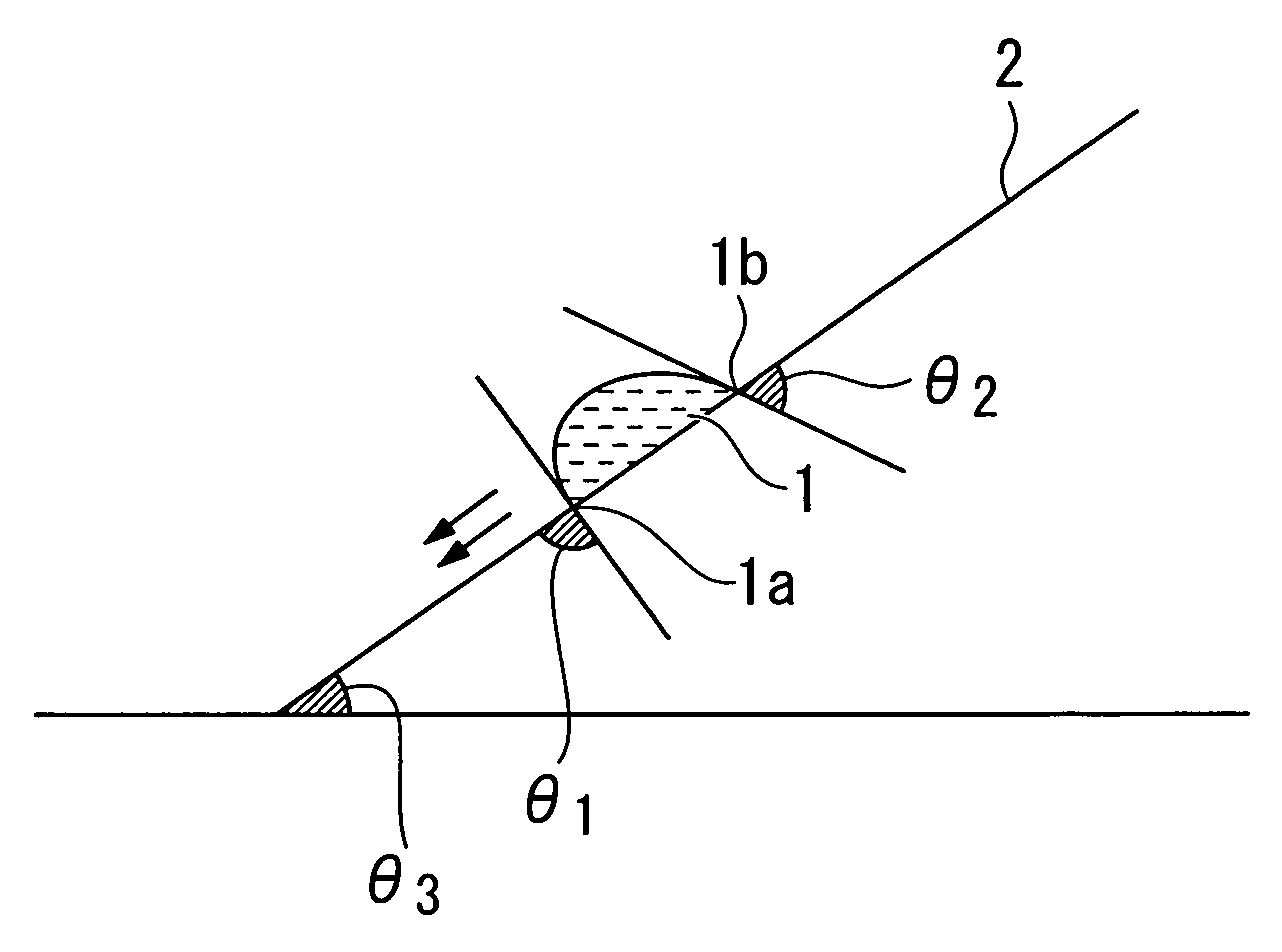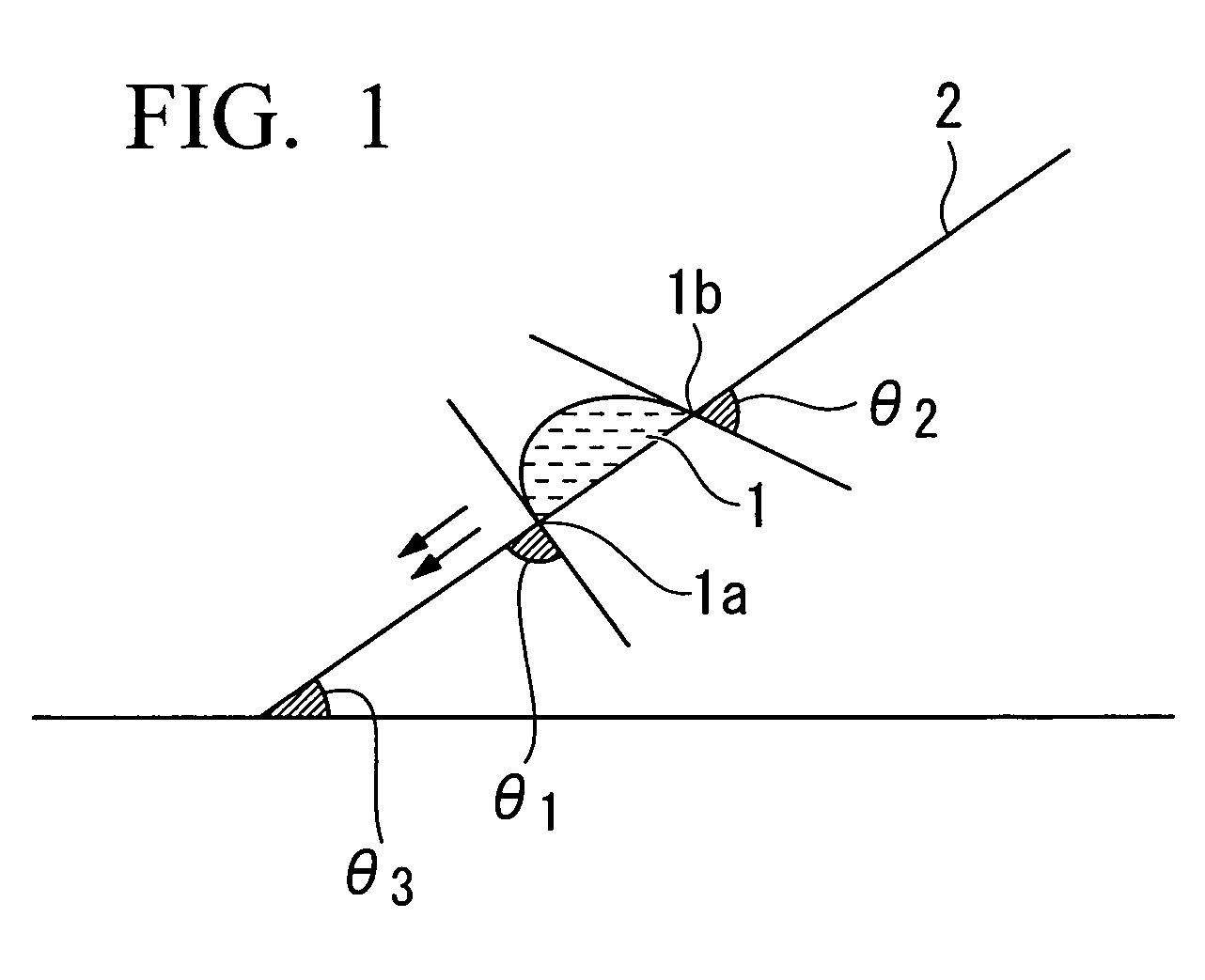Resist composition for immersion exposure and method of forming resist pattern using the same
- Summary
- Abstract
- Description
- Claims
- Application Information
AI Technical Summary
Benefits of technology
Problems solved by technology
Method used
Image
Examples
synthesis example 1
Synthesis of Compound (1)
[0488]
First Step: Synthesis of 2,2,2-trifluoroethyl bromoacetate (Compound (III))
[0489]400 g of acetone, 100 g of 2,2,2-trifluoroethanol (compound (I)) and 121.3 g of triethylamine were added to a four-necked flask equipped with a stirrer, a nitrogen-feeding pipe, a dropping funnel and a thermometer. The four-necked flask was purged with nitrogen, and cooled to 0° C. Then, 86.1 g of bromoacetylbromide (compound (II)) was dropwise added thereto at 0 to 5° C. over 3 hours, followed by stirring at 0° C. for 2 hours. Thereafter, 300 g of saturated sodium hydrocarbonate aqueous solution was added thereto to stop the reaction, and extraction was conducted using ethyl acetate. The obtained organic phase was washed with water, followed by drying with anhydrous magnesium sulfate and concentration under reduced pressure. The resulting concentrate was purified by distillation under reduced pressure, thereby obtaining 72.4 g of 2,2,2-trifluoroethyl bromoacetate (compoun...
synthesis example 2
Synthesis of Polymeric Compound (2)
[0495]
[0496]3.84 g of isopropylalcohol was added to a four-necked flask equipped with a nitrogen-feeding pipe, a reflux condenser, a dropping funnel and a thermometer, and the flask was purged with nitrogen. Then, the flask was heated to 80° C., and a solution obtained by dissolving 15.0 g of the compound (1) and 0.582 g of azobisisobutyronitrile in 10.0 g of isopropylalcohol was dropwise added over 2 hours. Thereafter, stirring was conducted for 4 hours while maintaining the temperature at 80° C., and then the resultant was cooled to room temperature. The obtained polymerization reaction solution was dropwise added to an excess amount of an isopropylalcohol / water mixed solution to obtain a precipitate. The obtained precipitate was dissolved in tetrahydrofuran, and the resultant was dropwise added to an excess amount of an isopropylalcohol / water mixed solution. The precipitated resin was separated by filtration, followed by washing and drying, ther...
synthesis example 3
Synthesis of Compound (3)
[0522]
First Step: Synthesis of 2,2,3,3,3-pentafluoropropyl bromoacetate (Compound (III-b))
[0523]400 g of acetone, 100 g of 2,2,3,3,3-pentafluoropropanol (compound (I-b)) and 121.3 g of triethylamine were added to a four-necked flask equipped with a stirrer, a nitrogen-feeding pipe, a dropping funnel and a thermometer, and synthesis was conducted in the same manner as in the synthesis of compound (III), thereby obtaining 49.6 g of 2,2,3,3,3-pentafluoropropyl bromoacetate (compound (III-b)).
Second Step and Third Step: Synthesis of 1,1-diethyl-2-(2,2,3,3,3-pentafluoropropoxycarbonyl)ethyl methacrylate (Compound (3))
[0524]224.7 g of tetrahydrofuran, 24.7 g of 3-pentanone (compound (IV)) and 23.6 g of a zinc powder were added to a four-necked flask equipped with a stirrer, a nitrogen-feeding pipe, a dropping funnel and a thermometer, and the flask was purged with nitrogen. Then, iodine was added thereto in a catalyst amount, and 7.6 g of the compound (III-b) obta...
PUM
| Property | Measurement | Unit |
|---|---|---|
| Fraction | aaaaa | aaaaa |
| Fraction | aaaaa | aaaaa |
| Fraction | aaaaa | aaaaa |
Abstract
Description
Claims
Application Information
 Login to View More
Login to View More - R&D
- Intellectual Property
- Life Sciences
- Materials
- Tech Scout
- Unparalleled Data Quality
- Higher Quality Content
- 60% Fewer Hallucinations
Browse by: Latest US Patents, China's latest patents, Technical Efficacy Thesaurus, Application Domain, Technology Topic, Popular Technical Reports.
© 2025 PatSnap. All rights reserved.Legal|Privacy policy|Modern Slavery Act Transparency Statement|Sitemap|About US| Contact US: help@patsnap.com



